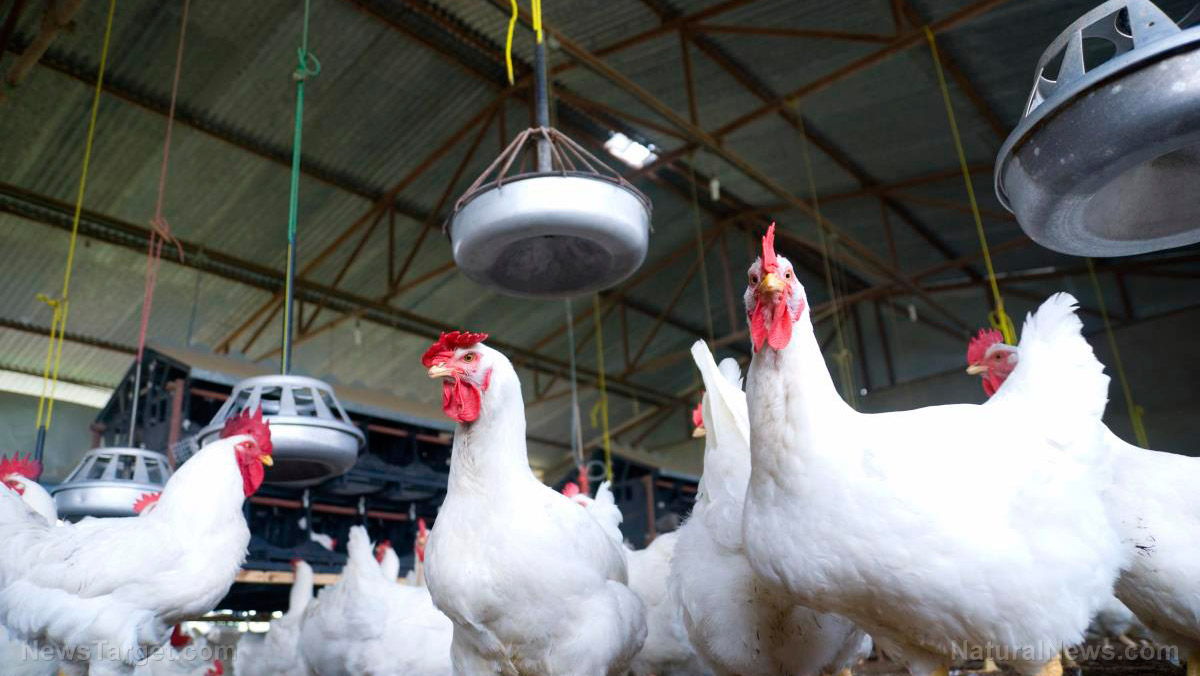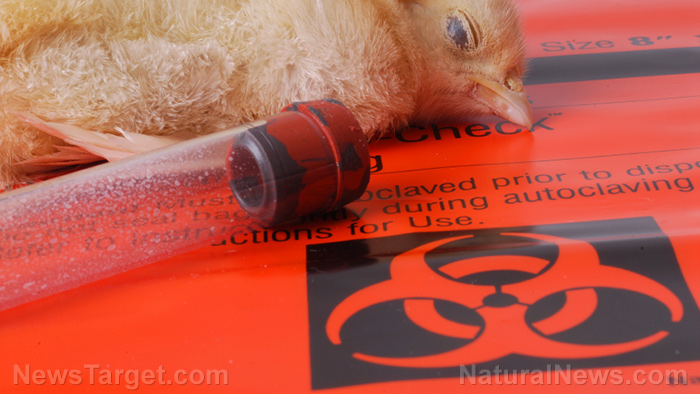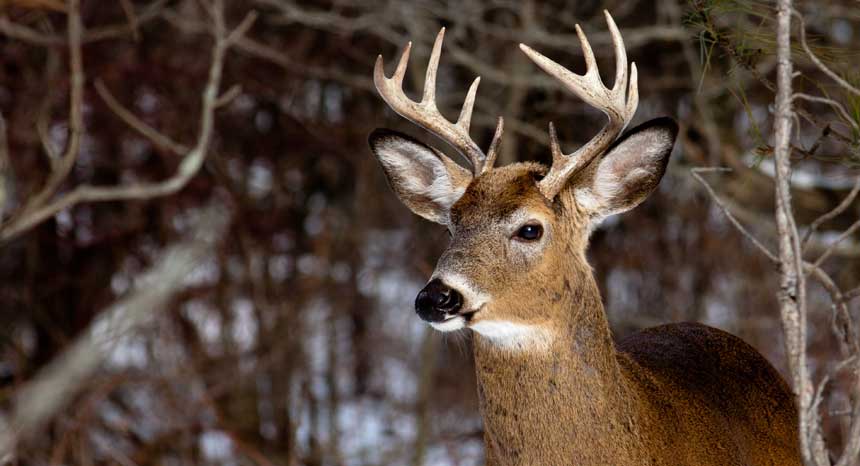BE AFRAID: A bird flu pandemic could be “100 times worse than COVID,” warn researchers in obvious fear mongering psyop
04/10/2024 / By Zoey Sky

Experts have warned that a bird flu pandemic could be “100 times worse” than Wuhan coronavirus (COVID-19) and kill at least 50 percent of infected patients. The White House has also announced that it is keeping an eye on the developing situation.
In a recent briefing, virus researchers warned that the H5N1 strain of bird flu or avian flu could be getting “dangerously close” to causing another pandemic. The briefing was attended by avian flu researchers, doctors and officials from government agencies who were worried about the bird flu case in a human patient.
Several reported cases of bird flu in a variety of mammals, including cows, cats, and, more recently, humans, are all increasing the risk of the virus mutating to become more transmissible, warned experts. However, others who also attended the briefing advised that it was too early to panic because there were still too many unknown factors about recent cases to warrant alarming the public.
On April 3, a White House representative announced that it was tracking bird flu in the country. Karine Jean-Pierre, the White House press secretary, also explained that President Joe Biden has been briefed on avian flu. Jean-Pierre added that the Centers for Disease Control and Prevention (CDC) and other agencies are investigating the matter.
The briefing was conducted after reports revealed that a dairy farm worker in Texas tested positive for bird flu, alongside 12 herds of cows in six states and three cats also in Texas that subsequently died.
Testing done on the worker has revealed that the virus had already mutated to spread more easily. However, the CDC claimed that this mutation had been recorded before, that the risk was low and that there was no sign of human-to-human transmission.
John Fulton, a pharmaceutical industry consultant for vaccines and founder of BioNiagara, a Canada-based pharmaceutical company, organized the briefing after receiving inquiries from the media.
Dr. Suresh Kuchipudi, a bird flu researcher in Pittsburgh and one of the speakers at the briefing, advised that avian flu “[has been] on the top of the pandemic list for many, many years and probably decades.” He also added that the virus could soon potentially cause a pandemic.
Kuchipudi said H5N1 virus has the potential to become a “pandemic virus” because it is being globally distributed and able to infect a range of mammalian hosts, including humans. He warned that the avian flu “has the greatest pandemic threat [that is] playing out in plain sight and is globally present.”
H5N1 influenza A strain could mutate and maintain a high case fatality rate, experts warn
Kuchipudi’s thoughts were echoed by Fulton, who said the H5N1 strain of influenza A could trigger a worse pandemic than the coronavirus. According to Fulton, bird flu could be “100 times worse than COVID,” or it could be if bird flu eventually mutates and maintains its high case fatality rate.
Fulton said once bird flu has mutated to infect humans, the world can only “hope that the [fatality rate] drops.”
According to the World Health Organization (WHO), the estimated fatality rate for H5N1 is 52 percent, based on the 462 deaths recorded among the 887 people diagnosed with the virus since 2003. Meanwhile, COVID-19 only kills less than 0.1 percent of infected patients. (Related: Largest producer of fresh eggs in the U.S. halts production because of claimed avian flu outbreaks in Texas and Michigan.)
Since 2020, when the new strain of bird flu emerged and began spreading across the globe, seven out of 26 people infected with H5N1 have died, or nearly 30 percent.
Some experts cautioned that in more serious but rare cases, H5N1 could infect the respiratory tract, which could cause pneumonia. Bird flu can also infect other areas, such as the eyes, where it causes inflammation.
Newer infectious diseases tend to have high fatality rates because people do not yet have a defense against them, which allows the virus to get past the immune system and cause a more severe infection.
Other experts advised that people shouldn’t panic. One of them was David Swayne, who has studied avian flu infections in animals for decades.
Swayne explained that for the cattle cases, there is not enough data and that it’s easy for the alarm to be raised. However, he cautioned that those monitoring the matter must first carefully fill in the “huge lack of knowledge” about the matter.
Some ongoing studies are examining infected cattle.
As of writing, 12 farms across six states in the U.S. have reported H5N1 infections in their cows. This included five in Texas, along with several farms in New Mexico, Michigan, Ohio, Idaho and Kansas. Researchers are also conducting tests on cows in Iowa.
Scientists have reported that infected cattle are lethargic, eating less food and producing less milk. However, they are not dying from their infections.
There are also many unknown factors in the human, such as how the patient was infected. Experts believe that the patient could have been infected because of direct contact with cows or from touching a surface contaminated with the virus and then touching their face.
While many mammals are being infected with avian flu, experts have shared that there is one species they are focusing on: pigs.
Pigs have the same receptors in their lungs as humans, and this means an outbreak among the mammals could predict a similar episode in humans. However, infections are not currently being recorded in pigs.
Researchers have also warned that pigs could become infected with human and avian flu viruses at the same time. This could then swap genes through a process called reassortment, creating a new version of the virus.
The situation has a potentially wider impact than just causing panic because it could also increase milk and egg prices.
First, milk from infected cows cannot be sold. Additionally, egg farms are required to cull all their chickens when avian flu is detected. This could take farms months to recover from.
Avian flu was behind the surge in egg prices in 2020, when the price of a dozen large Grade A eggs increased from $1.72 to $3.59 over the year to November 2022. At their peak, prices reached $4.82 for a dozen eggs.
Watch the video below for more information about the bird flu cases reported in dairy cows in Texas, New Mexico and Kansas.
This video is from the TruNews channel on Brighteon.com.
More related stories:
Hong Kong recently banned U.S. poultry amid bird flu outbreak in 5 states.
NEW STUDY: H3N8 avian flu virus has strong transmission potential, with risk of causing an outbreak.
Sources include:
Submit a correction >>
Tagged Under:
agriculture, animals, avian flu, avian influenza, big government, bird flu, chaos, Dangerous, Ecology, environment, food supply, H5N1, health science, infections, influenza, national security, outbreak, pandemic, panic, plague, Poultry, Texas, virus mutations, world agriculture, zoonotic transmission
This article may contain statements that reflect the opinion of the author
RECENT NEWS & ARTICLES
COPYRIGHT © 2017 ECOLOGY NEWS




















